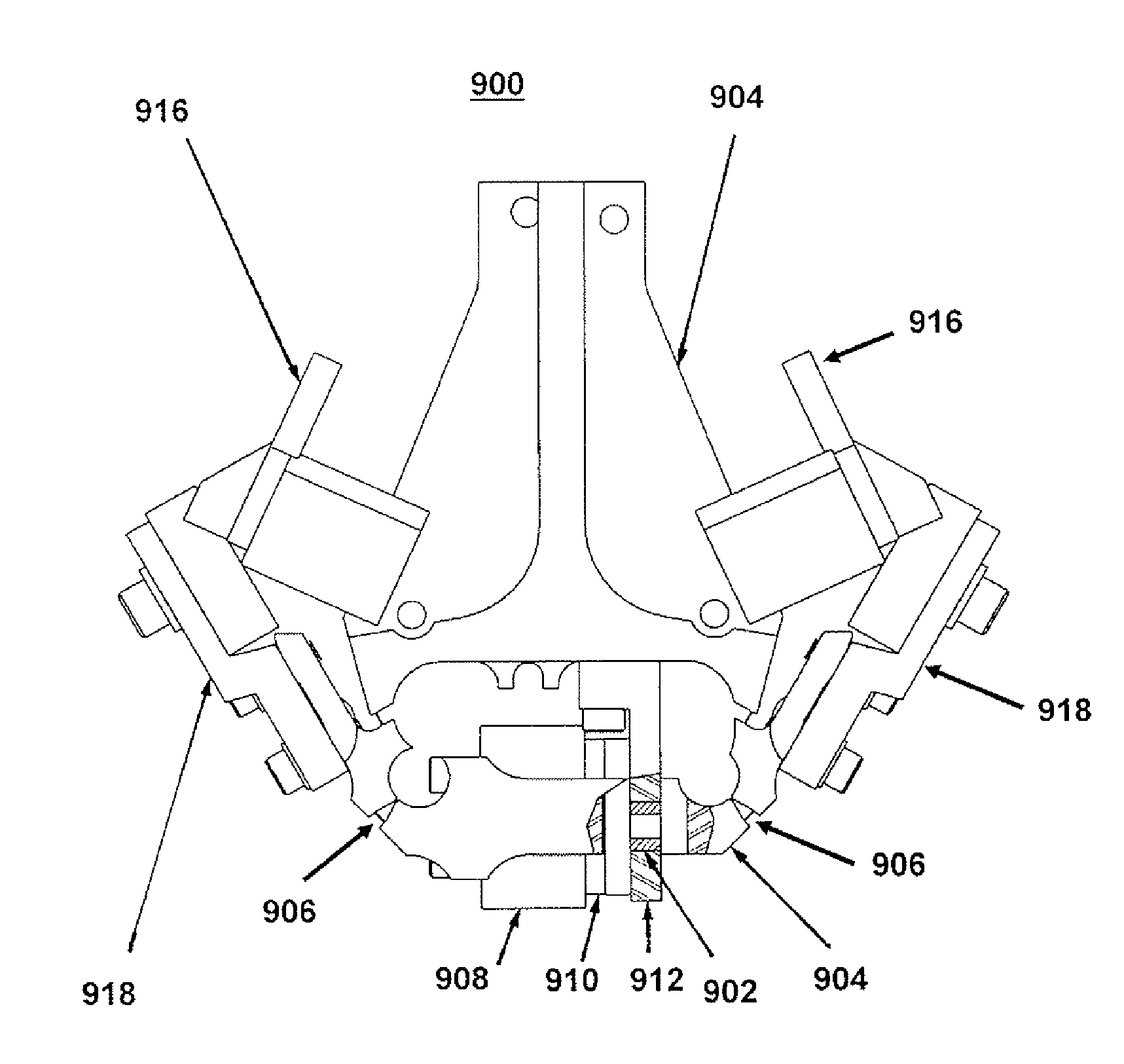Stiffness compensation in opto-mechanical mechanisms
a technology of stiffness compensation and opto-mechanical assembly, which is applied in the direction of optical radiation measurement, instruments, spectrometry/spectrophotometry/monochromators, etc., can solve the problems of increased force required to maintain the angular position of the opto-mechanical assembly, waste of additional force, and indefinite operation life etc., to improve the reliability of the flexure bearing 602, improve the efficiency of the magnet arrangement, and reduce the net restoring torque ratio ratio
- Summary
- Abstract
- Description
- Claims
- Application Information
AI Technical Summary
Benefits of technology
Problems solved by technology
Method used
Image
Examples
Embodiment Construction
[0050]As is described above, the present invention approximates a negative spring constant. The negative spring constant is approximated with the partial closing of an air gap in a permanent magnet-iron magnetic circuit as shown in the different embodiments of FIGS. 5, 6, 7, 8 and 9.
[0051]FIGS. 5a to 5e each show without limitation an example of an embodiment for the two (2) magnet circuits 500 where the same reference numeral identifies the same element in all of the figures. Thus reference numerals 502 and 504 which appear in all of the figures identify a first ferromagnetic base and a permanent magnet respectively. Reference numeral 506 which appears only in FIG. 5c identifies a second ferromagnetic base.
[0052]FIG. 5a shows a single magnet configuration. FIG. 5b shows an extended single magnet configuration. FIG. 5c shows in a sectional view a closed loop single magnet configuration. FIG. 5d shows a double magnet configuration. FIG. 5e shows in a sectional view a single ring shap...
PUM
| Property | Measurement | Unit |
|---|---|---|
| restoring torque | aaaaa | aaaaa |
| optical mechanism | aaaaa | aaaaa |
| magnetic field | aaaaa | aaaaa |
Abstract
Description
Claims
Application Information
 Login to View More
Login to View More - R&D
- Intellectual Property
- Life Sciences
- Materials
- Tech Scout
- Unparalleled Data Quality
- Higher Quality Content
- 60% Fewer Hallucinations
Browse by: Latest US Patents, China's latest patents, Technical Efficacy Thesaurus, Application Domain, Technology Topic, Popular Technical Reports.
© 2025 PatSnap. All rights reserved.Legal|Privacy policy|Modern Slavery Act Transparency Statement|Sitemap|About US| Contact US: help@patsnap.com



